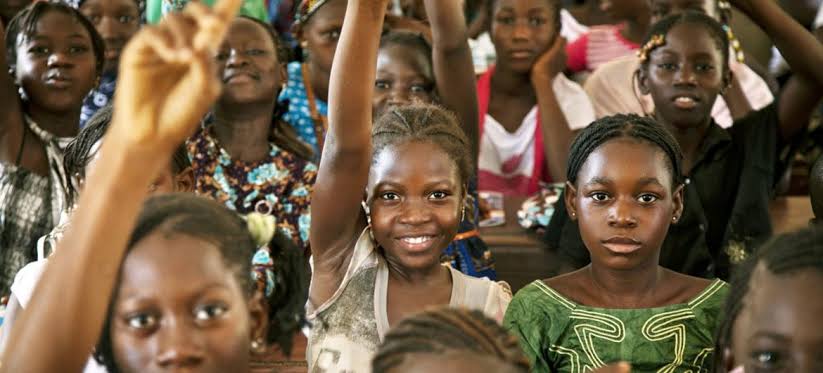In many parts of the world, the birth of a girl child is often met with mixed reactions. While progress has been made in recent years to bridge the gender gap, societal biases and systemic challenges still persist. The empowerment of the girl child is not just a matter of fairness; it is essential for sustainable development, economic growth, and societal well-being. Investing in the well-being and potential of girls is investing in the future of humanity.
With the Current Landscape Globally, girls continue to face significant obstacles in accessing education, healthcare, and equal opportunities. According to UNESCO, approximately 130 million girls worldwide are out of school. Barriers such as poverty, early marriage, cultural norms, and inadequate school facilities hinder their educational journey. Education is a powerful tool for empowerment, but these obstacles often prevent girls from reaching their full potential.
Moreover, gender-based violence, including physical and sexual abuse, trafficking, and exploitation, disproportionately affects girls. These injustices not only harm individual girls but also impede broader societal progress. Addressing these issues requires a comprehensive approach that combines education, legal protection, and community support.
The Power of Education is the cornerstone of empowerment. It opens doors to opportunities, enhances critical thinking, and provides the skills necessary to participate fully in society. Educated girls are more likely to delay marriage, have fewer and healthier children, and contribute significantly to the economy. Investing in girls’ education yields high returns for individuals and communities alike. For instance, each additional year of schooling can increase a girl’s future earnings by up to 20%.
Educated women are more likely to participate in the labor force, leading to increased economic productivity and growth. Furthermore, when girls receive an education, they are better equipped to participate in decision-making processes, both within their families and in their communities. This participation fosters more inclusive and equitable societies.
Health and Well-beingAccess to healthcare is another critical area where girls face disparities. Girls are often deprived of essential healthcare services, including reproductive health education and resources. This neglect not only jeopardizes their health but also limits their ability to pursue education and employment. Ensuring that girls have access to comprehensive healthcare services is vital for their development and well-being. Malnutrition, lack of sanitation, and limited access to clean water disproportionately affect girls, particularly in low-income regions.
Addressing these health challenges requires coordinated efforts to improve healthcare infrastructure, provide education on hygiene and nutrition, and ensure that girls have the resources they need to stay healthy.Legal and Social Protections Legal frameworks and social protections play a crucial role in safeguarding the rights of the girl child. Laws against child marriage, gender-based violence, and discrimination are essential.
However, enforcement remains a challenge in many regions. Strengthening legal systems and ensuring that laws are implemented effectively can protect girls from exploitation and abuse. In many countries, girls are denied their rights to inherit property, access justice, and receive an education. Legal reforms must address these inequities and provide mechanisms for girls to claim their rights. Social protections, such as cash transfer programs and scholarships, can also help mitigate the economic barriers that prevent girls from attending school and accessing healthcare. Economic Empowerment is a vital aspect of supporting the girl child. Programs that provide vocational training, financial literacy, and entrepreneurship opportunities can help girls achieve financial independence. When girls have the skills and resources to earn their own income, they are better equipped to make informed decisions about their lives.
Microfinance programs targeting young women can provide the capital needed to start small businesses, fostering economic independence and reducing vulnerability to exploitation. Additionally, promoting women in leadership and decision-making roles in business and politics can create role models and pave the way for future generations of girls. The Role of Community and Family Communities and families play a pivotal role in shaping the future of the girl child. Positive attitudes and supportive environments are crucial for girls to thrive.
Parents, in particular, need to be advocates for their daughters, ensuring they have equal opportunities to succeed. Community leaders and influencers can also challenge harmful norms and practices, promoting gender equality and respect for girls’ rights. Community-based programs that engage men and boys are essential for changing attitudes towards gender roles and equality. Educating fathers and brothers about the benefits of empowering girls can lead to more supportive family dynamics and greater acceptance of girls’ rights. Global Initiatives and Partnerships International organizations and governments have launched numerous initiatives to support the girl child.
The United Nations’ Sustainable Development Goals (SDGs) include specific targets for gender equality and the empowerment of all women and girls. Collaborative efforts between governments, non-profits, and the private sector are essential to amplify these initiatives and create lasting change. Programs such as UNICEF’s “Girls’ Education Initiative” and the “Global Partnership for Education” focus on improving access to quality education for girls. Partnerships with private companies can also provide innovative solutions, such as digital learning platforms and mentorship programs, to support girls’ education and empowerment.
Conclusion Empowering the girl child is not just a moral imperative; it is a strategic investment in our future. When girls are educated, healthy, and supported, they become powerful agents of change in their communities and beyond. It is time to break down the barriers that hold girls back and to create a world where every girl can reach her full potential. By doing so, we pave the way for a brighter, more equitable future for all.
The journey to empower the girl child requires a collective effort from all sectors of society. By prioritizing education, health, legal protections, and economic opportunities, we can create an environment where girls are free to dream, achieve, and contribute to a better world. The empowerment of the girl child is not just a goal; it is a necessity for a just, prosperous, and sustainable future. Empower the girl child and make her nation proud.

